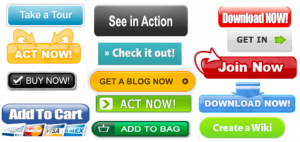“Strategic calls-to-action (CTAs) can help you guide your visitors through the buying journey and directly impact your conversion rates.” OBERLO

You’re probably thinking that CTA is just another combination of letters that marketers use to make you feel incompetent and woefully behind the latest trends.
But I am about to give you 5 really, really easy ways to make this acronym your best friend.
What is a CTA?
Let’s put it this way, why do you make posts, blogs, articles, or maybe even a video or podcast? Think about it, you take all that time to plan, write, record, and publish – why?
Because you want a reaction from a potential client.
You want them to click here, learn more, ask for a demo, or leave their email.
 And that is what a CTA is, it is you guiding your potential client to do something very specific. Unfortunately, I would venture to say most of you didn’t really think about what you want a client to do with the content you created. You probably just heard everyone talking about making blogs, videos, or social media posts and said, “Hey, to be a success I need to do that too.”
And that is what a CTA is, it is you guiding your potential client to do something very specific. Unfortunately, I would venture to say most of you didn’t really think about what you want a client to do with the content you created. You probably just heard everyone talking about making blogs, videos, or social media posts and said, “Hey, to be a success I need to do that too.”
All this content, without a CTA, is like running the play in football, making the touchdown, and then not taking the kick for the extra points – which could win you the game in the long run.
Why do you create content?
Even if you hadn’t thought about why you are creating original content, it would behoove you to start thinking about it now. If you are investing time to research, plan and construct content then be sure you are investing your time wisely – and do it with a purpose.
Here are 5 of the most common reasons why someone would create original content:
- Hard CTA (this is the most classic reason)
- Generate traffic, conversions & leads
- Soft CTA
- Improve brand reputation
- Gain client trust
- Establish industry authority
- Build SERP rankings
Did you see what I did? I classified these reasons as Hard CTAs or Soft CTAs — now, I don’t mean hard because it is difficult – I mean hard because it is a direct request for action. And soft, well, think of it as more of a nudge than a blatant request.
 Though the content may vary, you will always want to add a CTA. The ultimate goal of content is to build your business by highlighting who you are and what you know, your business ethics, and the benefits that your services or products can bring to others.
Though the content may vary, you will always want to add a CTA. The ultimate goal of content is to build your business by highlighting who you are and what you know, your business ethics, and the benefits that your services or products can bring to others.
A call to action is vital to the success of the content because the reader often needs you to give them directions on how to best make use of the info they just found.
What does a CTA look like?
 You have been interacting with CTAs your entire digital life – just think of all the times you clicked on a submit button, or on those annoying cookie policy boxes, or pushed enter to get the desired result… These are all CTAs. And when you think about them, they were all there to prod you into making a decision or taking that first step.
You have been interacting with CTAs your entire digital life – just think of all the times you clicked on a submit button, or on those annoying cookie policy boxes, or pushed enter to get the desired result… These are all CTAs. And when you think about them, they were all there to prod you into making a decision or taking that first step.
So, here are my 5 really (really) easy tips to follow when adding that call to action to your content.
- Button color can make a difference. For example, “orange CTAs can boost conversions by more than 32% – red CTAs can result in a 21% conversion growth.”
- Give your potential client time to absorb the material. Potential clients really want to see the whys and wherefores about the business and service before you ask them to act. Embed the call to action after you have made a solid presentation.
- Bring attention to your call to action; this is where those special effects make sense. Make the buttons wiggle, jiggle and jump up and down to draw attention to them.
- Keep it clean. That means leaving whitespace around the button. Don’t distract your potential client with too many bells and whistles. Don’t overdo the wiggle and jiggle by adding arrows, photos, and extra text.
- Use a strong command verb. Be proactive and guide your potential client in the right direction. From the day we’re born, we’re taught to follow orders. The trick is to get your readers to follow yours.

